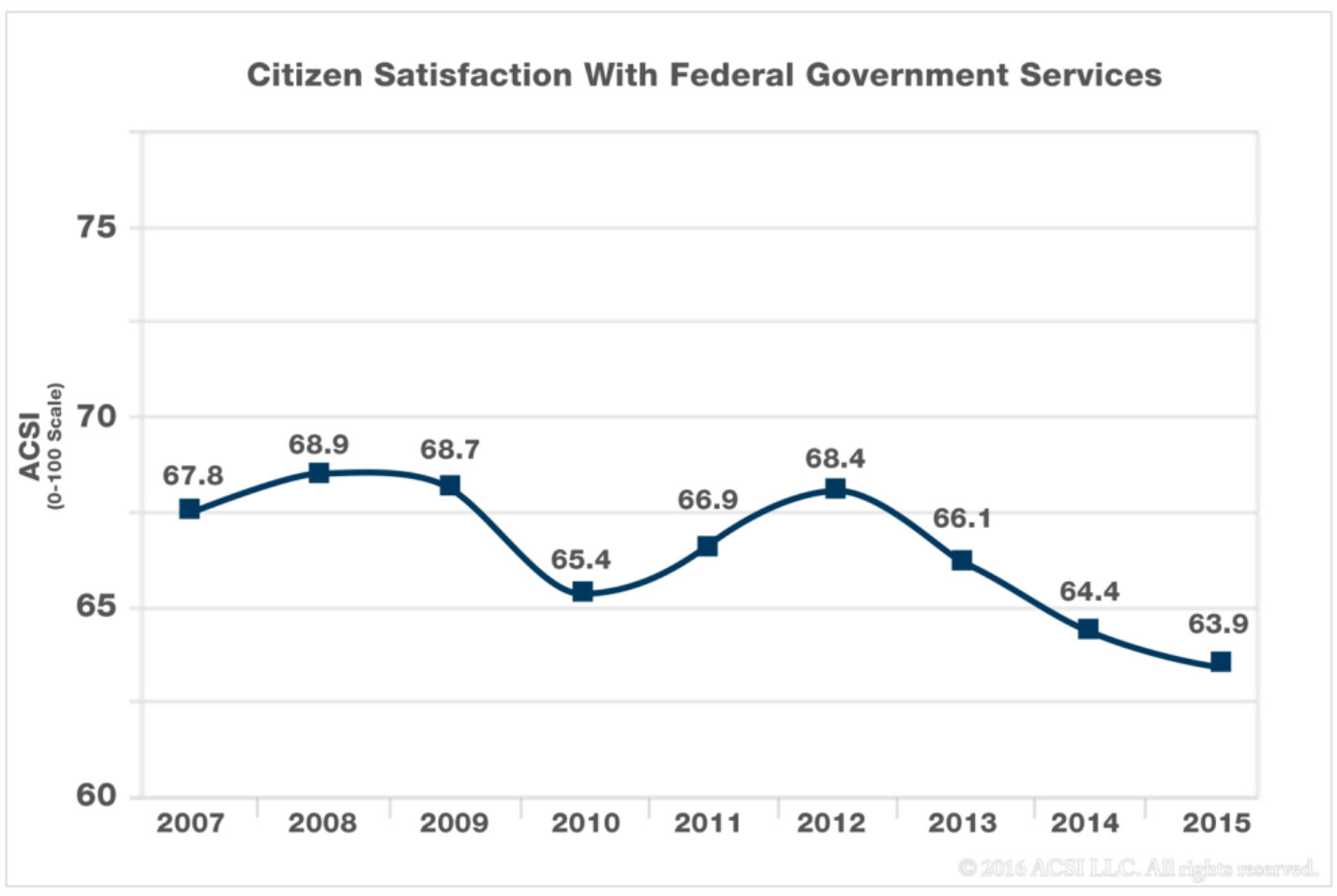
Great Smoky Mountains National Park. The National Park Service is the part of the Interior Department best known by the public. Chris Mobley / National Park Service
Interior Department Tops Satisfaction Survey
Overall, customer reviews of federal services decline for third year.
The public’s approval of agency services declined for the third year running in the University of Michigan’s American Customer Satisfaction Index released on Tuesday, with some bright spots in timelier service and clearer communications.
Overall federal customer satisfaction in the 2015 survey fell 0.8 percent to an overall score of 63.9 based on interviews with 2,079 citizens in November and December.
“Deteriorating customer satisfaction was widespread in 2015, and the slump in citizen satisfaction is similar to what we observe in the private sector or among voters in the political arena,” said survey founder and chairman Claes Fornell, in a release. “But if the small gains in the drivers of citizen satisfaction take hold or continue to rise, we might finally see a bit of a turnaround.”
The Interior Department registered the highest satisfaction score (75), compared with Treasury with the lowest (55). The second-best satisfaction score was achieved by the State Department (71), followed by Defense (70).
“The primary citizen-facing service offered by the Interior Department is the always-popular National Park Service, which maintains 400 parks, monuments, and areas visited by nearly 300 million people each year,” the report said. “Likewise, the State Department interacts with citizens mostly through its passport issuance and renewal services, which have tended to be easy, efficient and therefore satisfying for users."
Improved and more timely service earned an index score of 76 and clearer information, a 71. The quality of agency websites remained static at a score of 72.
In another bright spot, retirees gave the Pension Benefit Guaranty Corp. “an exceptionally high mark of 91, better than the best in the private sector (the trio of Amazon, Nordstrom, and Chick-fil-A at 86),” the report said.
Still, user satisfaction with federal and local government services remains significantly below that for products and services supplied by the private sector, analysts said, though the gap between public and private in all-year surveys has narrowed as customer satisfaction with private companies has suffered a larger deterioration over a longer period of time.
Treasury’s low score, the analysts said, is typical, and due largely “to its responsibility for collecting taxes through the Internal Revenue Service. Even though the IRS performs a service that is difficult for most people to feel a fondness for, it is not impossible to improve the satisfaction of tax filers,” the summary said. Electronic tax return “filers have a satisfaction level that is 20 points higher than paper filers (76 and 56, respectively).”
The second and third-to-last scorers were the Justice (59) and Veterans Affairs (60) departments. “The disparity between the Department of Defense and Veterans Affairs is notable because it speaks to the vastly different experience of our military personnel,” said survey Director of Research Forrest Morgeson. “Services are great when you’re enlisted, but the federal government has many challenges in delivering health services to its massive and growing population of veterans.”
The Obama administration’s governmentwide score also dipped during the recession years 2009-2010 before rising until 2012. The overall satisfaction score is based on benchmarks of process, information, customer satisfaction and websites.








